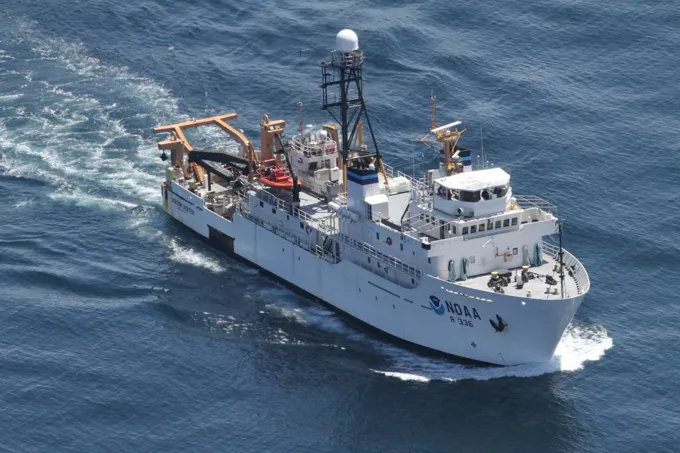
Vessel Operations & Environmental Law In The Chesapeake Bay: Endangered Species Act And The Marine Mammal Protection Act
What Encompasses A "Take"?
Tug boat owners, cargo carriers, cruise ships, and pleasure vessel owners take notice -- the National Marine Fisheries Service acting under authority of the Endangered Species Act, 16 U.S.C. sections 1531-1544, listed the Atlantic Sturgeon as “Endangered” in the Chesapeake Bay. The listing decision gives tremendous protection to the fish; anyone who treats the fish in a manner that qualifies as a “take” risks civil penalties up to $25,000.00 for each violation and criminal penalties up to $50,000.00 and one year of imprisonment. 16 U.S.C. section 1540.
The Act defines a “take” as meaning: “to harass, harm, pursue, hunt, shoot, wound, kill, trap, capture, or collect, or to attempt to engage in any such conduct.” 16 U.S.C. section 1532 (19). The operator of a tugboat that hits an Atlantic Sturgeon would have committed a “take”, and could thus face civil or criminal penalty. As the volume of maritime traffic increases, whether due to the James River Barge Line / 64 Express promoted by the Virginia Port Authority as a way for container traffic to “leap frog” congestion on I-64, or due to other factors, the potential grows for unwelcome interaction with one or more ESA listed species. Similarly, a person line fishing for rockfish from a pleasure boat, or net fishing from a trawler for menhaden, who instead catches an Atlantic Sturgeon on his line or in his net is at similar risk. The listing decision, which was published in the Federal Register at 77 Fed. Reg. 5,880-01 (Feb. 6, 2012), extends protection to all Atlantic Sturgeon thatare spawned in the watersheds that drain into the Chesapeake Bay and into coastal waters from the Delaware-Maryland border on Fenwick Island to Cape Henry, VA, as well as wherever these fish occur in coastal bays and estuaries and the marine environment.
77 FR 5880-01. Adding more animals to the list also raises the potential for unwelcome interaction between vessel and protected species. Other sea creatures found in the Chesapeake Bay that are protected by an ESA listing include the Kemp’s Ridley Turtle, the Leatherback Turtle, and the Loggerhead Turtle, with the American Eel, the Scalloped Hammerhead Shark, the Dusky Shark, and the Sand Tiger Shark not yet listed but being monitored for potential future listing.
Self-Reporting To Avoid Non-Compliance
Managing the risks associated with operating vessels in the Chesapeake Bay demands crew awareness as to identity of animals that have been ESA listed and instruction to them that the best course is to give those animals a wide berth. A corollary principle is that any interaction with these animals should be reported to the National Marine Fisheries Service, as the potential penalties for noncompliance with the ESA are more severe in the absence of self-reporting. There are of course situations where interaction with ESA protected species is foreseeable or even inevitable . . . the best way to manage that risk is to obtain an “incidental take permit” from the National Marine Fisheries Service.
Protection From the Marine Mammal Protection Act
In addition to the ESA, all marine mammals in the United States are protected by a separate law – the Marine Mammal Protection Act, 16 U.S.C. sections 1361-1389 – which offers protections to many animals that get no protection under the Endangered Species Act. Examples of marine mammals protected by the MMPA include whales, dolphins, seals and manatees. Some marine mammals have been listed under the Endangered Species Act, which means they are protected by both laws, two examples being the Northern Right Whale and the West Indian Manatee. Sightings of these animals in the Chesapeake Bay are extremely rare though Chessie the Manatee was sighted in summer 2011 in Calvert County, Maryland, following an absence of some 10 years, that prior sighting being Chessie’s transit through the Virginia Great Bridge Locks on August 30, 2001.
The only marine mammal that frequents the Chesapeake Bay with any regularity is the Bottlenose Dolphin. The MMPA forbids anyone to “take” a marine mammal with “take” broadly defined to include: “to harass, hunt, capture, or kill, or attempt to harass, hunt, capture, or kill any marine mammal.” 16 U.S.C. section 1362(14). Violators face potential civil penalty up to $10,000.00 per violation or criminal penalty of $20,000.00 plus one year imprisonment. 16 U.S.C. section 1375. As with the ESA, risk management strategies are to raise crew awareness that all marine mammals are federally protected and instruct crews to give them a wide berth; report all interactions to the National Marine Fisheries Service; and, for vessel operations where interaction with MMPA protected species are foreseeable or even inevitable, obtain a take permit from the National Marine Fisheries Service, normally issued in the form of an “incidental take authorization/letter of authorization” or an “incidental harassment authorization”.
Jim Lang Waterfront Law is extremely well-versed in environmental law. If you have any questions or concerns, please contact us here.
